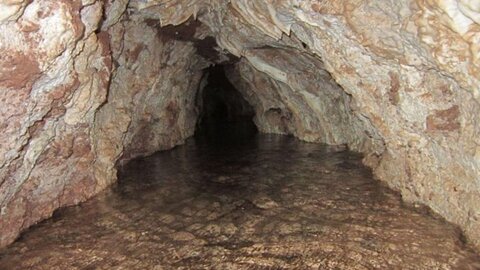Iran (IMNA) - Groundwater is a vital resource for our world, so it must be conserved against exploitation and contamination. The importance of groundwater is increasing as a result of climate change.
A crucial phase of the water cycle in life is groundwater. Nearly a quarter of the world's population receives their drinking water from it, which contains 99% of the freshwater resources on the planet. Additionally, a fifth of the world's population relies on groundwater irrigation for crops.
The undergrounds supply is analogous to money saved in a bank account. If you take money sooner than you deposit new money, you may run into monetary balance. Harvesting water out of groundwater quicker than it is recharged generates serious issues in the long run by reducing the volume of stored water.
One of the most difficult aspects of safeguarding groundwater is that it is, by definition, underground. Because groundwater levels are difficult to monitor with the naked eye, supplies can be accidentally contaminated or even overdrawn, implying that more is taken out of the ground than can be replaced sustainably. Landfills, septic tanks, leaking underground gas tanks, and excessive fertilizer and pesticide use can all damage groundwater.
NASA reports that 13 of the 37 major aquifers on earth are in critical condition. One of the most affected is the Arabian Aquifer System, which provides water to 60 million people. Over-abstraction not only depletes essential resources, but it also negatively affects the land, which is essential to our survival as a species.
The increased demand for water as a result of human activity, along with the impacts of global warming, has had a direct influence on groundwater recharge and depletion in most regions of the world. The greatest impact to groundwater depletion in recent decades, however, has been an increase in water demand for potable use, irrigation, and other human activities, rather than climate change.

Any city's water infrastructure needs long-term management. This infrastructure must manage rising water demands while simultaneously protecting the natural water resources' environmental characteristics.
The Iranian Red Crescent Society estimates that 4.8 million people are at moderate to high risk of drought-related effects, mostly in remote and rural areas.
This report indicates that out of a total of 31 provinces, 29 provinces, especially the provinces of South Khorasan, Kerman, Sistan, and Baluchistan, Hormozgan, Khuzestan, Isfahan, and Razavi Khorasan, have been severely affected by drought.
In addition to encouraging negative social trends and countermeasures, the lack of a safe and sufficient water supply for drinking, health, agriculture, animal husbandry, and electricity places an increasingly destructive and unstable pressure on the health and income of households.
Rain and snowfall pouring through the soil are expected to recharge groundwater naturally. However, in many places of the world, the ground is being depleted of water faster than it can replenish it. This can result in water table depletion and declining water sources, but it can also cause the soil to contract, causing the layers on top to decrease, sometimes dramatically.
One of the most critical regions of the country in terms of subsidence is the plains of Isfahan province; This province has 35 plains, and the significant increase in water extraction from groundwater sources and aquifers has caused 27 plains to be in an unfavorable condition in terms of water reserves, and any development of exploitation and new harvesting is prohibited in order to balance the water resources.
Many environmental experts attribute the land subsidence to drying of Isfahan’s Zayandeh River. With the aquifer of the Isfahan plain not being fed as well as increasing harvest, the amount of subsidence in the city of Isfahan reported to about 16 centimeters, which has affected the central parts and the historical texture of the city. In Isfahan’s Kolah Ghazi National Park, a huge gap has been discovered, which indicates a sharp drop in underground water sources.

This is an alarming signal for such a populated city that suffers from water shortage, and this is officials’ duty to pay special attention to groundwater depletion and triggers the possible solutions.
Groundwater reserves will be more important to preserving our access to clean, drinkable water as climate change accelerates. We need to ensure proper waste and chemical disposal, encourage large-scale aquifer recharge interventions, support awareness-raising campaigns, and pressure local and national policymakers to protect groundwater and strengthen water governance.


Your Comment